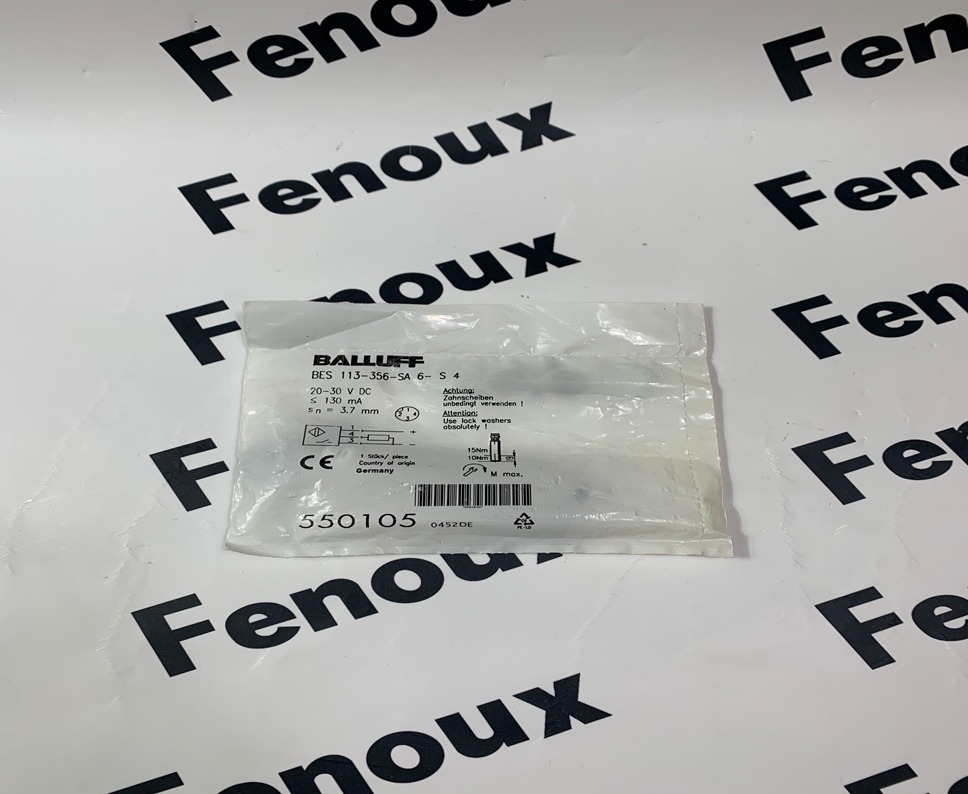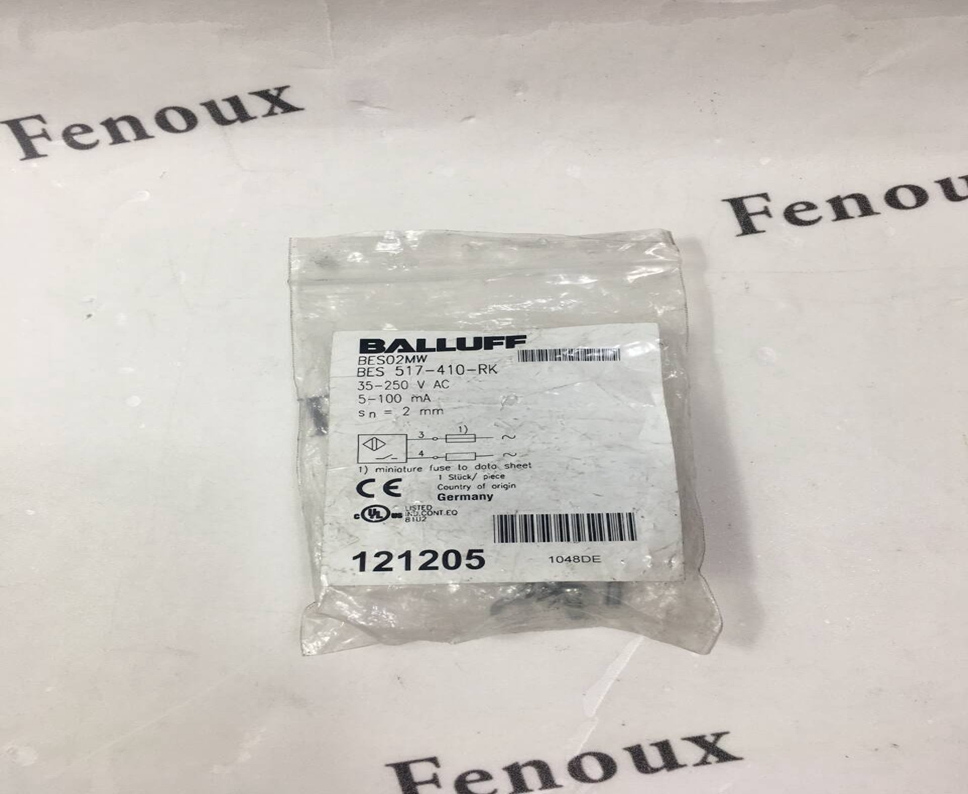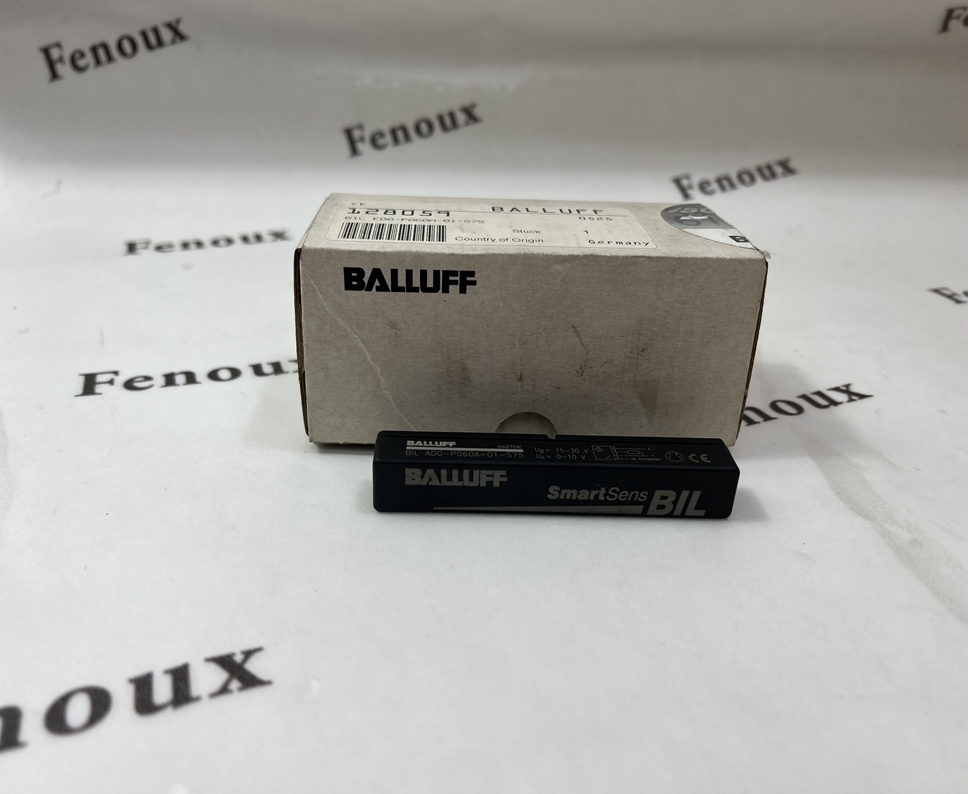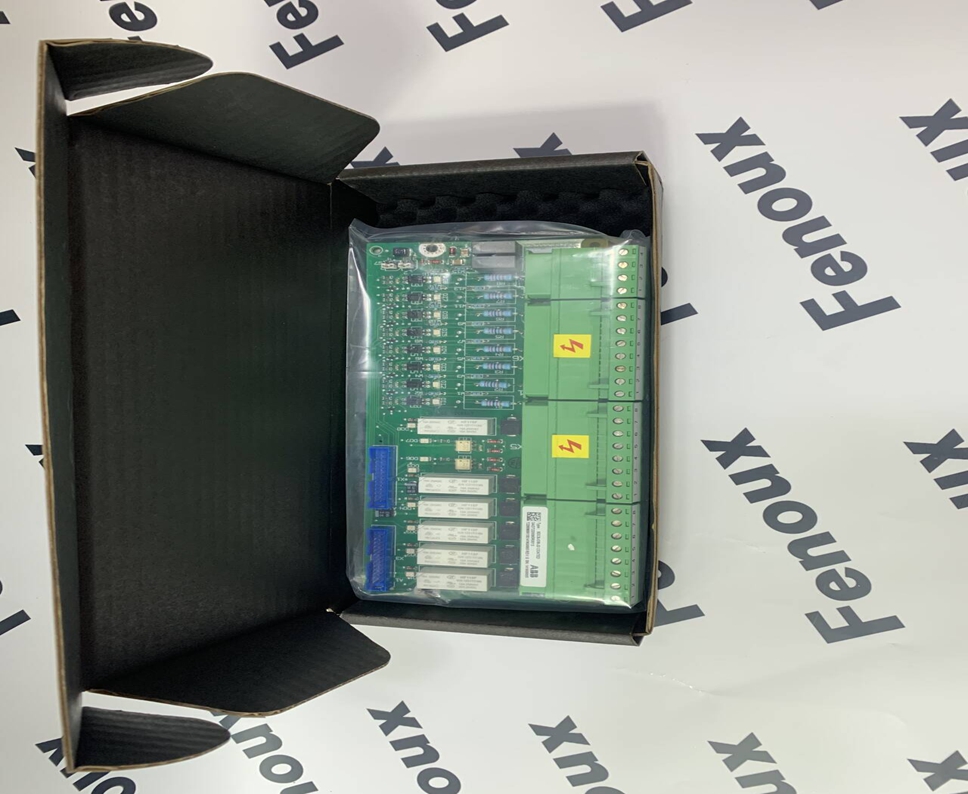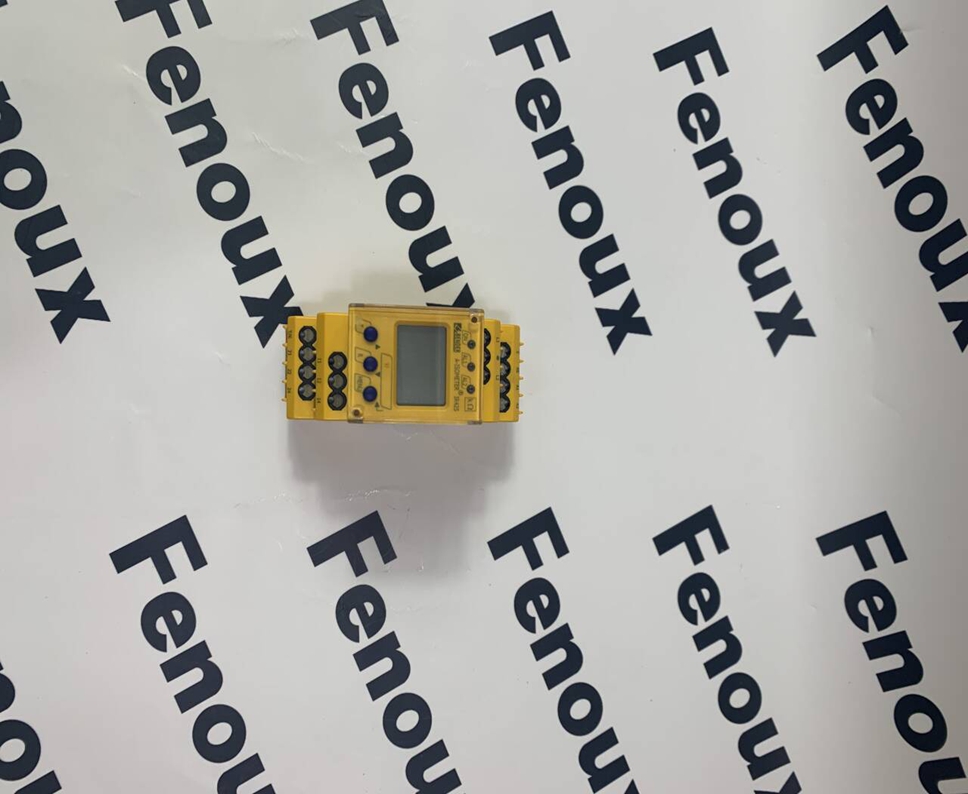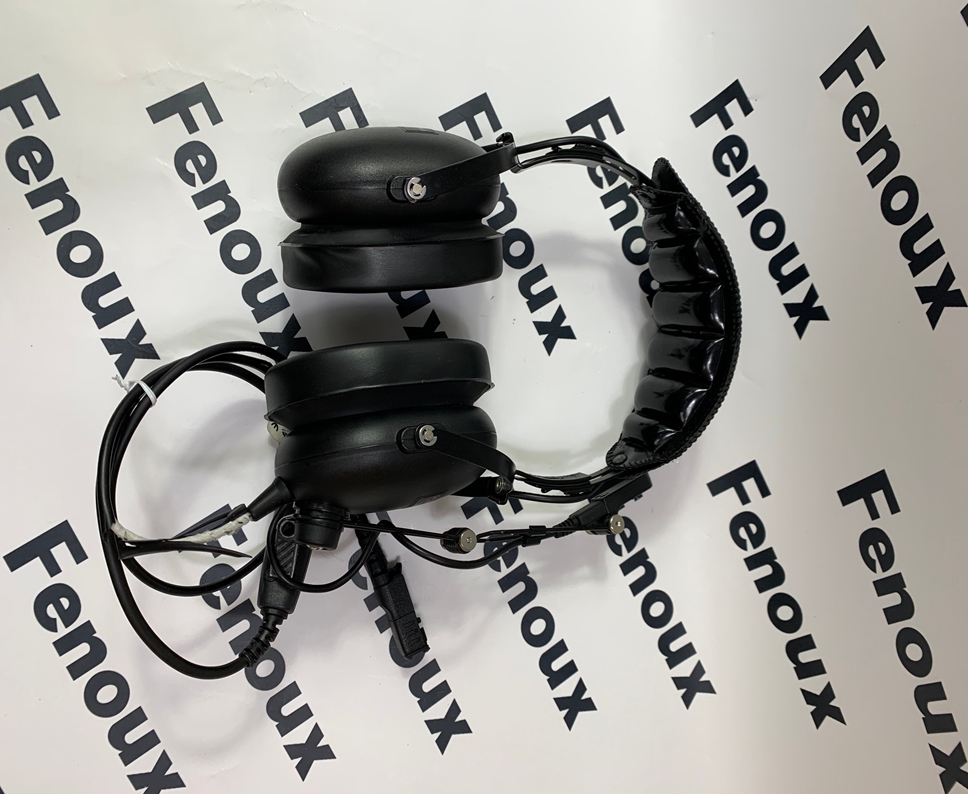Balluff BES113-356-SA6-S4 Inductive Proximity Sensor
Brand:Balluff
Model number:BES113-356-SA6-S4
Colour:new
Warranty: 12 months
Lead Time:3-day working day
Country of origin: USA Price: Please contact us
Product weight:0.25kg
Shipping Port: China
Payment: Bank of Chicago, Bank of Singapore
Express cooperation: fedex, DHL, UPS and your express account
Service: Professional Sales provides 24 hours /7 days online service
Balluff BES113-356-SA6-S4 Inductive Proximity Sensor
Balluff BES113-356-SA6-S4 Inductive Proximity Sensor Overview
The Balluff BES113-356-SA6-S4 is an inductive proximity sensor, part of Balluff's extensive BES series. Inductive sensors are non-contact sensors used to detect the presence of metallic objects. They are widely utilized in industrial automation for position detection, counting, and control applications due to their reliability, durability, and wear-free operation.
Product Detailed Description
Function: This sensor generates an electromagnetic field. When a metallic object enters this field, it causes a change in the field, which the sensor detects, triggering a switching output. It provides a reliable signal indicating the presence or absence of metallic objects.
Operating Principle: Inductive sensors operate on the principle of electromagnetic induction. An oscillator creates an alternating magnetic field that radiates from the sensing face. When a metallic object approaches, eddy currents are induced in the object, drawing energy from the oscillator and causing the oscillation amplitude to decrease. The sensor's evaluation circuit detects this change and converts it into a switching signal.
Key Characteristics (Based on typical BES series interpretation):
BES: Denotes the Balluff "Standard" Inductive Sensor series, known for robust performance in general industrial environments.
113-356: These numbers typically encode the housing style, size, and perhaps sensing distance. Balluff has various cylindrical (M8, M12, M18, M30) and block-style housings. A common type with "356" could suggest a specific barrel diameter (e.g., M12 or M18) and a particular sensing range.
SA6: This part usually indicates the output configuration. "SA" often refers to a PNP (Positive-Negative-Positive) output, and "6" could specify the switching function (e.g., Normally Open - NO or Normally Closed - NC). PNP outputs are common in European wiring standards.
S4: This typically refers to the connection type. "S4" commonly indicates an M12x1 connector (4-pin).
Design:
Housing Material: Often nickel-plated brass or stainless steel for robustness.
Sensing Surface Material: Typically PBT (Polybutylene Terephthalate) or other durable plastics.
LED Status Indication: Most Balluff inductive sensors include LEDs to indicate power supply status and switching status, aiding in commissioning and troubleshooting.
Installation Type: Can be flush (embeddable in metal) or non-flush (requires clear space around the sensing face). The "BES" series offers both.
Product Parameters (Typical for Balluff BES Inductive Sensors, model-specific variations apply)
Sensing Principle: Inductive
Housing Style: Cylindrical (likely M12 or M18, based on model structure)
Installation: Flush or Non-flush (depends on exact variant)
Sensing Distance (Sn): Typically ranging from 2 mm to 8 mm for common M12/M18 sizes (e.g., 4 mm is a common value for a sensor with a "356" type designation, but this is an educated guess).
Output Type: PNP (Positive-Negative-Positive)
Switching Function: Normally Open (NO) or Normally Closed (NC) (e.g., if "6" implies NO)
Operating Voltage (Ub): 10-30 V DC (common for DC 3-wire sensors)
Switching Frequency: Typically 300 Hz to 2000 Hz, depending on the sensing distance and size.
Connection: M12x1 Connector, 4-pin (S4)
Current Consumption (No-load): Typically < 10 mA
Rated Operating Current (Ie): Max. 200 mA (or similar)
Short-circuit Protected: Yes
Polarity Reversal Protected: Yes
IP Rating: IP67 (common for industrial sensors, dust-tight and protected against temporary immersion in water). Some models may offer IP68 or IP69K.
Ambient Temperature: -25 °C to +70 °C (or similar, ranges can vary for specialized sensors like high-temperature versions).
Housing Material: Nickel-plated Brass or Stainless Steel.
Sensing Surface Material: PBT.
Approval/Conformity: CE, UKCA, cULus (common approvals).
Product Advantages
Non-Contact and Wear-Free: Detects metallic objects without physical contact, eliminating mechanical wear and extending the sensor's lifespan.
High Reliability: Robust design and solid-state electronics ensure consistent and dependable operation in industrial environments.
Resistance to Dirt and Contamination: Unaffected by dust, dirt, oil, and moisture, making them suitable for harsh industrial conditions.
Fast Switching Speeds: Capable of detecting objects at high speeds, suitable for dynamic automation processes.
Short-Circuit and Polarity Reversal Protection: Built-in protective features reduce the risk of damage due to wiring errors or electrical faults.
Easy Installation and Integration: Standard housing sizes and M12 connector simplify mounting and wiring into existing systems.
Visual Status Indication: Integrated LEDs provide immediate feedback on operating status and potential issues.
Cost-Effective: The BES series offers an excellent price/performance ratio for standard industrial applications.
Precautions
Correct Mounting:
Flush vs. Non-flush: Ensure the correct sensor type (flush or non-flush) is used for the mounting application. Flush sensors can be mounted directly into metal without reducing sensing distance, while non-flush sensors require a metal-free zone around the sensing face.
Tightening Torque: Adhere to the specified tightening torque for threaded barrel sensors to avoid damaging the housing or sensing face.
Mechanical Protection: Protect the sensor from direct impact or excessive vibration that could compromise its integrity.
Sensing Distance Considerations:
Target Material: The actual sensing distance can vary based on the target material (e.g., steel, aluminum, brass). Ferrous metals generally provide the maximum sensing distance.
Target Size: The target object should be larger than the sensor's active face for optimal detection.
Interference: Avoid mounting multiple inductive sensors too close to each other, or too close to large metal masses, as this can cause mutual interference or reduced sensing range.
Electrical Connection:
Voltage: Ensure the supply voltage is within the specified operating voltage range (10-30 V DC).
Wiring: Connect the sensor according to the wiring diagram (PNP typically involves a positive supply, a negative common, and an output that switches to positive when active). Incorrect wiring can damage the sensor.
Load Current: Ensure the connected load's current draw does not exceed the sensor's maximum rated operating current.
Environmental Conditions: Operate the sensor within its specified ambient temperature range. While robust, prolonged exposure to extreme temperatures can affect performance and lifespan.
Cleaning: Use non-abrasive methods for cleaning the sensing face to avoid scratches that could impair performance.
Product Applications
Balluff BES inductive proximity sensors are universally applied across various industries and automation tasks due to their versatility and reliability.
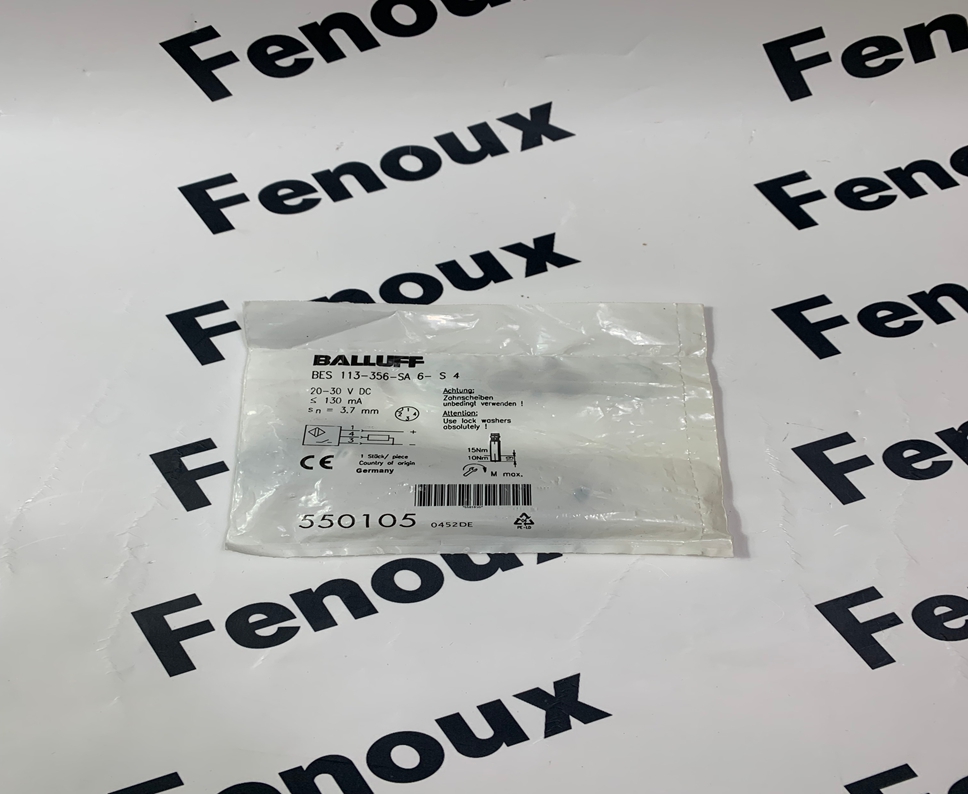
Shipping Port: China
Payment: Bank of Chicago, Bank of Singapore
Express cooperation: fedex, DHL, UPS and your express account
Service: Professional Sales provides 24 hours /7 days online service
Related products:
| Automation | ABM-507B-2-S-CE-S293 |
| AUTOMATION | EZ-T10C-F |
| AUTONET | HFAI-08 |
| AUTONET | HFDI-16 |
| AVAL DATA | AVME-115A |
| AVAYA | P5507FT-C |
| AVG | 100G-1S1R0 |
| AVG | 100G-3C1R0 |
| AVG | 100G-5A1R0 |
| AVG | 100G-5A1R0M |
| AVG | 100GUT15T3R0 |
| AVG | 100G-UT15T3R1 |
| AVG | UTP10TC0A00 |
| AXIOM | P1150/586T |
| AZBIL | FL7M-7J6HD-CN03 |
| Ball | WA564588-500 |
| Ball | WA564585-500 |
| Ball | WA564464-500 |
| Ball | WA564456-500 |
| Balluff | BIS-C-810-0003-X |
| Balzers | PM-P02-372 |
| BANNER | USDKTE4824C5YP2 |
| BANNER | MSKA4424C1 |
| BANNER | P4GRK2308SRRE |
| BARBER | 80NA-00001-002-0-00 |
| BARDEN | 122HDL |
| BARDEN | 126HDBTL |
| BARKSDALE | 9045ROAC3-MC-H |
| barksdale | BPS34GVM0010B |
| BASLER | BE1-25A |
You are welcome to make an inquiry
E-mail: alex@fenoux.com
Tel.: +86 13376984225
Skype: +86 13376984225
WhatsApp: +86 13376984225


